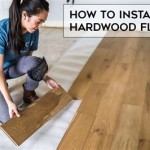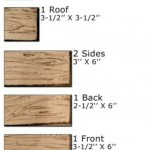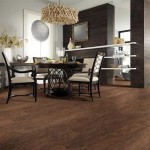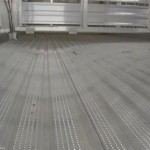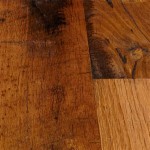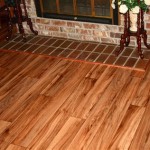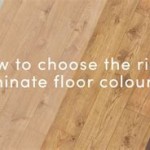Best Flooring Options for a Walkout Basement Bathroom
A walkout basement bathroom presents unique flooring challenges compared to bathrooms on upper levels. Primarily, the connection to the outdoors necessitates a flooring material that can withstand moisture, temperature fluctuations, and potential dirt or debris tracked in from outside. Selecting the appropriate flooring requires careful consideration of factors such as water resistance, durability, comfort underfoot, and aesthetic appeal.
The potential for moisture is significantly higher in a walkout basement. Ground moisture can seep through the concrete slab, especially if the waterproofing is compromised. Furthermore, the proximity to the exterior makes the bathroom susceptible to humidity changes and the possibility of water intrusion during heavy rainfall or flooding. Therefore, flooring must be highly resistant to water damage, preventing mold growth, warping, and deterioration.
Durability is also paramount. Walkout basements often serve as entry points from the yard or patio, leading to increased foot traffic and the potential for dirt, sand, and other abrasive materials to be dragged indoors. The chosen flooring should be able to withstand this wear and tear without showing signs of scratching, staining, or fading. Consider materials that are easy to clean and maintain to preserve their appearance over time.
Comfort is another factor that should not be overlooked. Basement floors tend to be colder than upper-level floors, particularly during the colder months. Selecting a flooring material that provides some level of insulation or is compatible with radiant heating can significantly enhance the comfort of the bathroom.
Water Resistance and Moisture Management
Water resistance is arguably the most important characteristic for flooring in a walkout basement bathroom. Materials that are inherently waterproof or highly water-resistant will provide the best protection against moisture-related problems. Several options are available, each with its own advantages and disadvantages.
Porcelain tile is an excellent choice due to its impervious nature. Porcelain tiles are fired at high temperatures, making them extremely dense and resistant to water absorption. They are available in a wide range of styles, colors, and textures, allowing for diverse design possibilities. Additionally, porcelain tile is highly durable and easy to clean, making it a practical option for high-traffic areas.
Ceramic tile is another suitable option, although it is generally less dense and more porous than porcelain tile. While ceramic tile can withstand some moisture exposure, it is important to ensure that the grout lines are properly sealed to prevent water from seeping through and causing damage to the subfloor. Regular sealing is essential to maintain the water resistance of ceramic tile.
Luxury Vinyl Plank (LVP) flooring is a popular choice for basement bathrooms due to its waterproof properties and realistic wood-look appearance. LVP is constructed from multiple layers, including a waterproof core and a durable wear layer that resists scratches, stains, and dents. It is also relatively easy to install, making it a cost-effective option for DIY projects.
Sheet vinyl flooring offers a seamless, waterproof surface that is ideal for preventing water damage. It is available in a variety of patterns and colors, and its continuous surface eliminates grout lines, reducing the risk of moisture penetration. Sheet vinyl is also relatively inexpensive and easy to clean, making it a practical choice for budget-conscious homeowners.
Epoxy flooring is a durable and waterproof option often used in commercial and industrial settings. It creates a seamless, non-porous surface that is resistant to chemicals, stains, and impact. Epoxy flooring can be customized with various colors and decorative flakes, offering a unique and modern aesthetic. However, professional installation is typically required, which can increase the overall cost.
When selecting any of these water-resistant options, proper subfloor preparation is critical. Ensuring a level and properly sealed subfloor will prevent moisture from rising and compromising the integrity of the flooring material. Consider using a moisture barrier or waterproof underlayment beneath the flooring to provide an extra layer of protection against moisture intrusion.
Durability and Maintenance Requirements
Beyond water resistance, durability is an essential consideration for flooring in a walkout basement bathroom. The floor will likely be subjected to heavy foot traffic, potential impacts, and the presence of dirt and debris tracked in from the outdoors. Choosing a flooring material that can withstand these conditions without showing signs of wear and tear is crucial for long-term performance and aesthetics.
Porcelain tile excels in terms of durability. Its high density makes it resistant to scratches, chips, and stains. Porcelain tile can withstand heavy foot traffic and is suitable for areas where objects may be dropped or dragged across the floor. Regular sweeping and mopping are typically sufficient to maintain its appearance.
Luxury Vinyl Plank (LVP) flooring also offers excellent durability. The wear layer of LVP is designed to resist scratches, stains, and dents, making it a suitable option for high-traffic areas. Some LVP products feature enhanced wear layers that provide even greater protection against damage. Regular sweeping and occasional mopping will keep LVP flooring looking its best.
Sheet vinyl is relatively durable, but it is more susceptible to scratches and dents than porcelain tile or LVP. It is important to choose a sheet vinyl product with a thick wear layer to minimize the risk of damage. Regular sweeping and mopping are sufficient for cleaning, but harsh chemicals should be avoided to prevent discoloration or damage to the surface.
Epoxy flooring is exceptionally durable and resistant to a wide range of chemicals and impacts. It is commonly used in garages and industrial settings due to its ability to withstand heavy use and harsh conditions. However, epoxy flooring can be slippery when wet, so it is important to choose a product with a non-slip additive to ensure safety in the bathroom.
The choice of grout can also impact the durability and maintenance requirements of tile flooring. Epoxy grout is a non-porous option that is resistant to stains, mildew, and cracking. It is more expensive than cement-based grout but requires less maintenance and provides superior protection against water damage. Cement-based grout should be sealed regularly to prevent staining and water penetration.
Proper maintenance is essential for extending the life of any flooring material. Regular sweeping or vacuuming will remove dirt and debris that can scratch or dull the surface. Mopping with a mild detergent and water is typically sufficient for cleaning most flooring types. Avoid using abrasive cleaners or harsh chemicals that can damage the finish. Promptly clean up spills to prevent staining and water damage.
Comfort and Aesthetic Considerations
While water resistance and durability are paramount, comfort and aesthetics play a significant role in the overall appeal of a walkout basement bathroom. The flooring should not only perform well but also provide a comfortable surface underfoot and complement the overall design of the space.
Porcelain tile can be cold and hard underfoot, especially during the colder months. However, this can be mitigated by installing radiant heating beneath the tile. Radiant heating provides a consistent and comfortable warmth that can significantly enhance the comfort of the bathroom. Area rugs can also be used to add warmth and softness to the floor.
Luxury Vinyl Plank (LVP) flooring offers a slightly softer and warmer surface than tile. Some LVP products feature a cushioned underlayment that provides additional comfort underfoot. LVP is available in a wide range of styles and colors, including realistic wood-look options that can add warmth and character to the bathroom. It is also compatible with radiant heating systems.
Sheet vinyl can be relatively comfortable underfoot, depending on the thickness and construction of the material. Some sheet vinyl products feature a foam backing that provides additional cushioning and insulation. Sheet vinyl is available in a variety of patterns and colors, allowing for diverse design possibilities. However, it may not offer the same level of visual appeal as tile or LVP.
Epoxy flooring is typically hard and cold underfoot, similar to concrete. However, it can be customized with various textures and colors to enhance its aesthetic appeal. Area rugs can be used to add warmth and softness to the floor. Epoxy flooring is also compatible with radiant heating systems.
When choosing a flooring material, consider the overall design of the bathroom. Select a color and style that complements the wall color, cabinetry, and fixtures. Lighter colors can make the room feel larger and brighter, while darker colors can add warmth and sophistication. Coordinate the flooring with the overall theme of the basement to create a cohesive and inviting space.
The texture of the flooring can also contribute to the overall aesthetic of the bathroom. Textured tiles or LVP can add visual interest and prevent slips and falls. Smooth surfaces can be easier to clean but may be more slippery when wet. Consider the practical and aesthetic implications of different textures before making a final decision.
Ultimately, the best flooring option for a walkout basement bathroom will depend on individual priorities and preferences. Carefully consider the factors discussed above, including water resistance, durability, comfort, and aesthetics, to select a flooring material that will provide long-lasting performance and enhance the enjoyment of the space.

Choose The Perfect Bathroom Floor Quick Step Co

What Is The Best Flooring For An Entrance Or Hallway Tarkett

Your Entry Into Entryway Flooring

How Does A Walk In Bath Work

10 Natural Stone Flooring Trends Quorn
Choosing Vinyl Flooring For An Entrance Or Hallway Tarkett

22 Hallway Flooring Ideas
:max_bytes(150000):strip_icc()/Hexagon-black-white-tile-floor-5ab93ca231283400376cea08.jpg?strip=all)
27 Flooring Ideas For Entryways

Best Flooring For Entryway Next Day Floors

Choose The Perfect Bathroom Floor Quick Step Co

